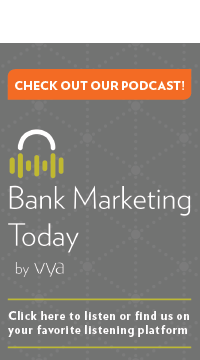Continuing our ongoing marketing organizational leadership series, this blog addresses the leadership competencies that drive success beyond functional expertise and provides recommendations for sharpening your leadership skills, including actionable steps you can take today to begin improving your organization’s cross-functional collaboration.
For this blog focused on actionable steps to improve relationship building, the expert perspective is provided by Diane Menendez, National Director of Coaching and & Mentoring at Catholic Health Initiatives. With 25+ years’ experience in executive coaching and leadership development, Diane has served in past roles including Head Coach, Global Talent Development for Convergys (a 65,000 person global organization) and an Executive Development role at Macy’s working to develop high-potential SVPs. Diane’s deep organizational development knowledge and experience is further enriched by a background in counseling psychology.
Emotional Intelligence (EQ) as a leadership asset
According to Diane, effective cross-functional collaboration depends largely upon two prerequisites: (1) the maturity of your leadership skills and (2) your ability to collaborate with others to accomplish organizational goals. “Up to a certain point anyone can become an effective specialist in their field,” says Diane. “But the defining quality of true organizational leaders begins with one essential key to collaboration – and that key is emotional intelligence.”
Emotional intelligence is defined by management professors Salovey & Mayer (1990) as “a form of social intelligence that involves the ability to monitor one’s own and others’ feelings and emotions, to discriminate among them, and to use this information to guide one’s thinking and action.” Emotional intelligence (sometimes called EQ, by comparing it to IQ, or Intelligence Quotient) skills are demonstrated by your awareness of your own and others’ emotions and your ability to influence other groups. A high EQ is correlated with managerial success—and actually matters more than the leader’s IQ.
The four components of emotional intelligence are Emotional Self-Awareness/Accurate Self-Assessment, Self-Management, Emotional Awareness of Others, and Relationship Management. Below we discuss skills aimed at improving your EQ in each of these areas.
Using MBTI to improve your EQ and sensitivity to other groups
Because EQ is so closely linked to how individuals process emotions and emotionality, Diane suggests the first step in augmenting your emotional intelligence skills is improving your self-awareness, which includes assessing your known strengths and understanding how these strengths can help or hinder your progress and leadership effectiveness. To this end, Diane suggests the Myers-Briggs type indicator assessment (MBTI), which measures individual preferences across the following dimensions:
Extroversion versus Introversion
“MBTI is a great tool for understanding communications preferences and styles across different functional groups,” says Diane, who in her first organizational development role developed marketing leaders at AT&T by applying understanding of MBTI styles and preferences to improve their leadership effectiveness.
If it feels like marketing is sometimes operating in another universe from different functional groups, the reality is that all functional silos, or Tribes, as Seth Godin calls them in his recent book (highly recommended by Diane), exist because individuals tend to have similar preferences, and even MBTI types, as those within their functional group. If one department seems to be speaking Greek and the other department is speaking Latin, it’s because the two groups haven’t learned how to bridge their differences in communications styles and preferences.
“And this piece is critical,” says Diane. “Awareness of others around us, especially in different functional groups, is critical to effective communication and collaboration.” Becoming more aware of other groups involves understanding their preferences, needs and influences, and the MBTI is, once again, a great tool for bridging ‘tribal’ differences.
Consider Diane’s example of Operations and Engineering. These groups tend to have a shorter-term, tactical, and results-oriented approach to planning, whereas marketers commonly take a longer-term, abstract, and conceptual view. To use a popular metaphor, operations groups focus on the trees while marketers prefer to focus on the forest. To bridge these functional differences, one effective approach Diane suggests is framing marketing plans and goals with specific recommendations tailored to the preferences of operations and engineering types. When communicating with these groups, marketers should formulate recommendations into a set of concrete points that will be accomplished in chronological order. Diane advises, too, that once you’ve shared these recommendations, it’s vitally important to follow through and complete what you’ve committed to doing.
Beyond MBTI: Tools for building relationships
Sometimes, marketing faces the challenge of being undervalued as a function. If you work with someone in another department who doesn’t appreciate or understand marketing, one of the best approaches you can take is to initiate a one-to-one relationship with that individual. “If you focus on shared interests to develop the relationship, then cross-functional learning can begin from a place of mutual respect as the relationship grows,” says Diane.
Another effective tool for building influence that Diane has practiced personally is to seek out a mentor who is deeply entrenched in another tribe – or if you can’t find a mentor in another group, seek out someone in your own department that has been particularly effective at collaborating with other departments.
“Simply asking to observe and participate in meetings as a guest can help you build your knowledge of personalities and styles and improve your interpersonal engagement with that group,” says Diane. Diane also adds that we often think of attending the meetings of other functional groups as an opportunity to improve processes and collaboration. But attending with the additional goal of building relationships can go great lengths towards improving your awareness and understanding of that group’s particular style of communicating. And this is a win-win because, as Diane puts its, “A good relationship always influences results.”
If it feels like it might be challenging to find the time to build cross-functional relationships, most likely, the better question is, “How can I afford NOT to take the time?” What Diane has found to be very true in her experience is that, if you invest in the relationship earlier, you’ll save time later when you may need to bank on the trust deposits you’ve made in your relationships so they can withstand occasional withdrawals. Think of this as “build the relationship before you must create results together.” For example, if you suffer a set back on a project, those colleagues whom you have a relationship with are more likely to forgive you and work through the problem with you. Because of your relationship, they see the mistake as a one-time misstep and not a sign of incompetence. If you’re interested in further reading on the trust bank metaphor coined by Stephen Covey, Diane highly recommends The Speed of Trust.
Finally, as other experts in this series have also advised, Diane coaches marketers to apply the discipline of the marketing function to themselves, which means looking at internal stakeholders as though they are your customers – because they really are! And how you market to your internal stakeholders most certainly influences your organizational success. For further reading and insights on marketing yourself, Diane recommends the book by Tom Peters, The Brand You50: Fifty Ways to Transform Yourself from an 'Employee' into a Brand That Shouts Distinction, Commitment, and Passion!
Making time to build relationships
Now that you’re equipped with new tools for building relationships, here are some of the tactical tips that Diane recommends to incorporate relationship building into your daily routine. First, she says, start with something small and do-able that you can build into your routine over time, such as going to lunch with one new person a week, or every day making one spontaneous call to someone you typically wouldn’t interact with, but who is involved in an area of the company that interests you. Find out what opportunities exist to learn more about that function, and over time you will build a better rapport with – and ultimately collaborate better with – that group.
A note on keeping promises
If you apply on a regular basis all of the expert points Diane has shared here, you are sure to build a lot of goodwill with your cross-functional stakeholders. However, any discussion of relationship building skills would be incomplete without addressing some of the marketing pitfalls that can erode trust, even when relationships have been developed and nurtured. Because marketers commonly exhibit a preference for Intuition over Sensing on the MBTI assessment, they may be prone to flexibility and sometimes offend or upset other groups, says Diane. Behaviors such as changing plans and appointments on the fly can diminish trust and credibility with other tribes, so Diane coaches that it’s really important to be conscious about keeping promises and following through with commitments. The Speed of Trust, mentioned earlier, is a great resource for marketers seeking to improve their awareness of the tools that can help to build the trust of other functional groups.
Concluding thoughts
Understanding the communications preferences and styles of other functional groups may seem like learning a new language at first, but if you follow Diane’s expert tips, you are likely to improve your leadership effectiveness and make new friends in the process. As you are building new relationships with cross-functional leaders, it’s essential to practice active listening skills and keep an open mind in all of your conversations. Being genuinely curious about the needs and preferences of other groups will go a long way towards building trust and influence.
Finally, Diane advises, don’t take yourself too seriously! Have fun and take jokes aimed at marketing in stride! Behind the jokes may be an opportunity to apply a new relationship building tactic; if you play your cards right, the next playful jab may be a perfect segue to an enlightened one-to-one mentoring engagement.
How have you addressed marketing organizational leadership challenges? Submit a comment below or join the discussion in the LinkedIn group, “Marketing Organizational Leadership.”
Resource list
Diane’s picks for improving organizational effectiveness, building relationships, and improving cross-functional collaboration…
Relationship building DO’s
1. DO take the MBTI inventory to improve your self-awareness. Remember that your preferences are like “handedness”— it’s not better or worse to be right handed vs. left handed; they are just different ways of getting to the same end result
2. DO build an understanding of the MBTI preferences of other groups to improve your relationships and cross-functional collaboration
3. DO initiate 1:1 relationships with stakeholders who don’t understand marketing; trust and collaboration will follow as the relationship is nurtured
4. DO seek out mentors from other tribes to improve your relationship with and understanding of other groups
5. DO seek out opportunities to observe and participate as a guest in meetings with other functional groups
6. DO provide a list of concrete steps that will be completed in chronological order when meeting with Operations and Engineering
7. DO keep your promises and follow through with all of your commitments
8. DO practice active listening to build trust and credibility with other groups
9. DO make time in your daily routine to build new relationships
10. DO apply the discipline of the marketing function to marketing yourself; meet the needs of your internal stakeholders and you will improve cross-functional collaboration
Relationship building DON’Ts
1. Don’t cancel appointments or meetings on the fly
2. Don’t take yourself too seriously

